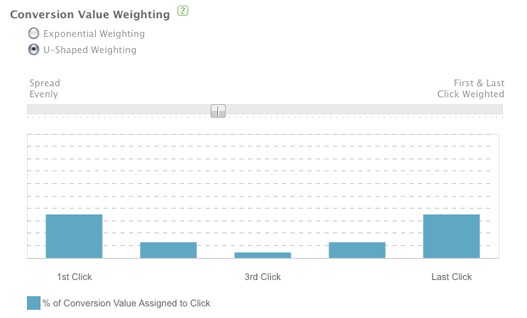6 Requirements For A Sound Paid Search Bidding Strategy
Whether it’s to drive traffic, increase conversions, or maximize revenue, bid optimization is the cornerstone of any effective paid search program. Across industries, publishers, devices, and geographies, bidding strategies vary tremendously as search marketers leverage a wide variety of proprietary, publisher, and third-party bidding tools and solutions. However, the success of these tools and solutions […]
Whether it’s to drive traffic, increase conversions, or maximize revenue, bid optimization is the cornerstone of any effective paid search program. Across industries, publishers, devices, and geographies, bidding strategies vary tremendously as search marketers leverage a wide variety of proprietary, publisher, and third-party bidding tools and solutions.
However, the success of these tools and solutions is tied to their ability to not only address the needs of the advertisers, but also their ability to calculate optimal bids in highly dynamic and competitive auction environments.
Consequently, industry-leading bidding solutions are characterized by six core attributes. Today, we’ll identify these requirements and discuss their role in enabling marketers to execute a sound paid search bidding strategy.
1. Flexible Revenue Capture
To optimize to a CPA or ROI goal or maximize revenue across a limited budget, search marketers must accurately stitch together publisher clicks and cost with backend conversions and revenue. Successfully pairing these datasets requires a solution that leverages existing infrastructure and provides a bridge between online marketing channels, as well as online events and offline conversions.
For example, online applications for life insurance and mortgages often require offline verification and approval through local branches. Capturing revenue as it moves across channels requires flexible integration with analytics, ad serving, call tracking, and CRM systems. This not only allows advertisers to maintain a single point of truth, but also enables them to calculate bids with a complete view of paid search performance.
2. Accurate Attribution
Keyword bids are only as effective as the data used to make the bid calculations. As a result, successfully capturing revenue is only the first step in executing a sound bidding strategy.
To calculate optimal bids, search markers must also be able to attribute conversions and revenue back to the individual keywords that drove those conversions. The accuracy of this keyword-level attribution relies on advertisers’ ability to account for differences in consumer behavior.
Consumers often search using several different queries while interacting with multiple ads prior to converting. The number of queries used during a typical conversion cycle varies across industries and product categories. Therefore, an effective bidding solution must be able to attribute revenue across each of the keywords that resulted in the conversion.
This includes the ability to give more weight to certain keywords along the click-path. For example, attributing revenue to only the first and last click, or attributing more revenue toward clicks that occur near the end of the click-path.
3. Significant Data
Whether it’s selecting top-performing ad creative or calculating optimal keyword bids, making decisions based on significant data is critical to maximizing paid search performance.
In the case of keywords, the number of clicks required when calculating optimal bids vary depending on the keyword’s conversion rate. Bid calculations where limited data is used can result in inflated or deflated bids, both resulting in suboptimal keyword performance.
4. Defined KPIs

Courtesy of Marin Software
In order to measure the success of any bidding strategy, search marketers must first define the key performance indicator (KPI) that their program will be optimized for. Though this may seem like a basic concept, selecting the most appropriate KPI can be very complex and difficult.
For example, for online retailers, maximizing revenue while hitting a target ROI is a common bidding goal that involves two KPIs. Lead gen companies that acquire revenue long after the initial paid search click might need to choose between a more reactive CPL goal or less reactive, but more accurate ROAS goal. Ultimately, having defined KPIs will drive a sound bidding strategy.
5. Seasonal Adjustments
Expected shifts in performance, such as rises in revenue-per-click (RPC) or dips in conversion rate, create a common challenge that all sound bidding strategies must address: seasonality. To account for seasonal changes in performance, such as the retail holiday season, search marketers must continuously analyze year-over-year performance and adjust bids accordingly. By deploying boost schedules, where keyword bids are increased or decreased over specified time periods, search marketers can proactively optimize their campaigns for fluctuations in RPC or conversion rate.
For example, bid aggressively or dampen bids for in-season and off-season products, respectively. A bidding strategy that doesn’t adjust for seasonality stands to miss out on critical revenue opportunities throughout the year, allowing competitors to capitalize on these opportunities instead.
6. Cyclical Adjustments
Cyclical, as opposed to seasonal, changes in RPC or conversion rate can last for time periods shorter or longer than a single calendar year. For search marketers, this behavior is typically defined by day-of-week or time-of-day fluctuations in performance. For example, an increase in mobile conversion rate during the afternoon and evening, or a decrease in desktop RPC during the weekend.
To account for these cyclical changes, search marketers must analyze campaign performance across multiple weeks, identifying day-to-day shifts in RPC or conversion rate; and in some highly sophisticated bidding scenarios, analyze daily performance hour by hour. Using these trends, search marketers can implement an optimal dayparting strategy unique to each campaign, where keyword bids are boosted or dampened daily or hourly.
Flexibility Is The Key To Success
These six requirements, though critical to a sound paid search bidding strategy, are still far from what sophisticated search marketers need to be successful. Addressing conversion latency or multiple conversion types, or forecasting performance based on “what if” scenarios, requires additional bidding tools and capabilities.
Bid strategies that account for these industry- and business-specific requirements provide search marketers with the flexibility they need to maximize revenue and hit aggressive business goals in an increasingly competitive paid search landscape. Next month, we’ll take a closer look at how these additional tools and capabilities enable advertisers to accomplish just that.
Opinions expressed in this article are those of the guest author and not necessarily Search Engine Land. Staff authors are listed here.
Related stories
New on Search Engine Land


